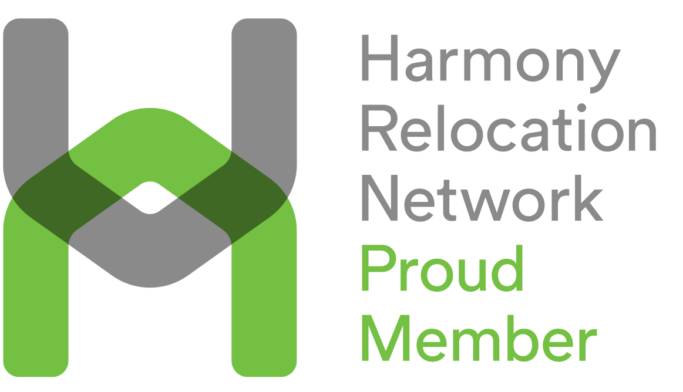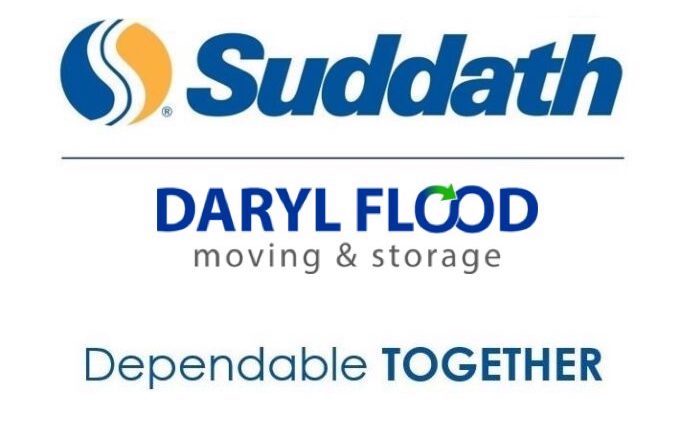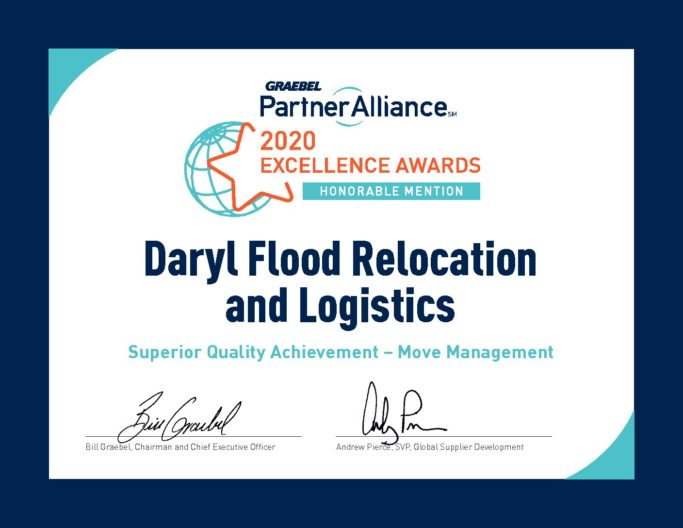Moving Tips & Resources
Daryl Flood Moving & Storage Makes Moving Easier through Launch of New Website
Daryl Flood Moving & Storage’s new website delivers a customized experience to help users explore moving services for local, long distance and international moves.
Daryl Flood Honored with Top Moving Awards at UniGroup Learning Conference
Company and individual recognitions celebrate excellence in customer service, quality, safety and revenue. (Coppell, Texas – March 15, 2023) – Daryl Flood was recently honored with awards in eight different categories celebrating company and individual…
Daryl Flood Moving & Storage Receives Top Level, Commitment to Excellence Gold Award at Cartus 2022 Global Network Conference
Award recognizes a commitment to delivering an excellent customer experience (Coppell, Texas – October 12, 2022) – Daryl Flood Moving & Storage, a Suddath® company, was recently honored for its outstanding performance at Cartus Corporation’s…
Daryl Flood Moving & Storage Wins BGRS Gold Award
(COPPELL, TEXAS – November 8, 2021) Daryl Flood Moving & Storage was recognized as a Gold Award winner during the BGRS 2021 Virtual Supplier Partner Forum on October 19, 2021. The Gold Award is the…
Daryl Flood International Team Twice Named Harmony Member Award Runner-Up
(COPPELL, TEXAS – May 19, 2021) Daryl Flood Moving & Storage International team was again voted runner-up for the Member Award at the Harmony Relocation Network shareholders meeting held virtually on April 30, 2021. The…
Suddath Acquires Daryl Flood, Inc.
Creates end-to-end moving powerhouse in the industry JACKSONVILLE, Fla. — Suddath®, a leading global transportation, relocation company, today announced that it has acquired Daryl Flood Inc. (DFI). The sale, which was effective March 31, 2021,…
Daryl Flood Moving & Storage Wins Mayflower Agent Awards
(COPPELL, TEXAS – March 12, 2021) Daryl Flood Relocation was recognized for 2020 performance achievements in fleet safety, quality performance, hauling revenue, booked volume and booked linehaul revenue with awards announced during UniGroup’s 2021 Virtual…
Four Receive 2021 Mayflower Transit Masters Club Award, Two Qualify for Inner Circle
(COPPELL, TEXAS – March 12, 2021) – Colleen Cline, Joseph Biasatti, Kirk Parrish and Rick Humphreys of Daryl Flood Relocation were honored with Mayflower’s Masters Club Award; Humphreys and Parrish further qualified for Mayflower’s Masters…
Daryl Flood Moving & Storage Wins Graebel Partner Alliance Excellence Awards Honorable Mention
(COPPELL, TEXAS – January 11, 2021) Daryl Flood Moving & Storage wins 2020 Graebel Partner Alliance Excellence Awards Honorable Mention for Supplier Quality Achievement – Move Management in the U.S. Domestic category at the 20th…
Daryl Flood Moving & Storage Recognized as BGRS Platinum Award Winner
(COPPELL, TEXAS – November 17, 2020) Daryl Flood Moving & Storage was honored as a Platinum Award winner at the 2020 BGRS Supplier Partner Forum during the virtual awards celebration on October 22, 2020. The…










